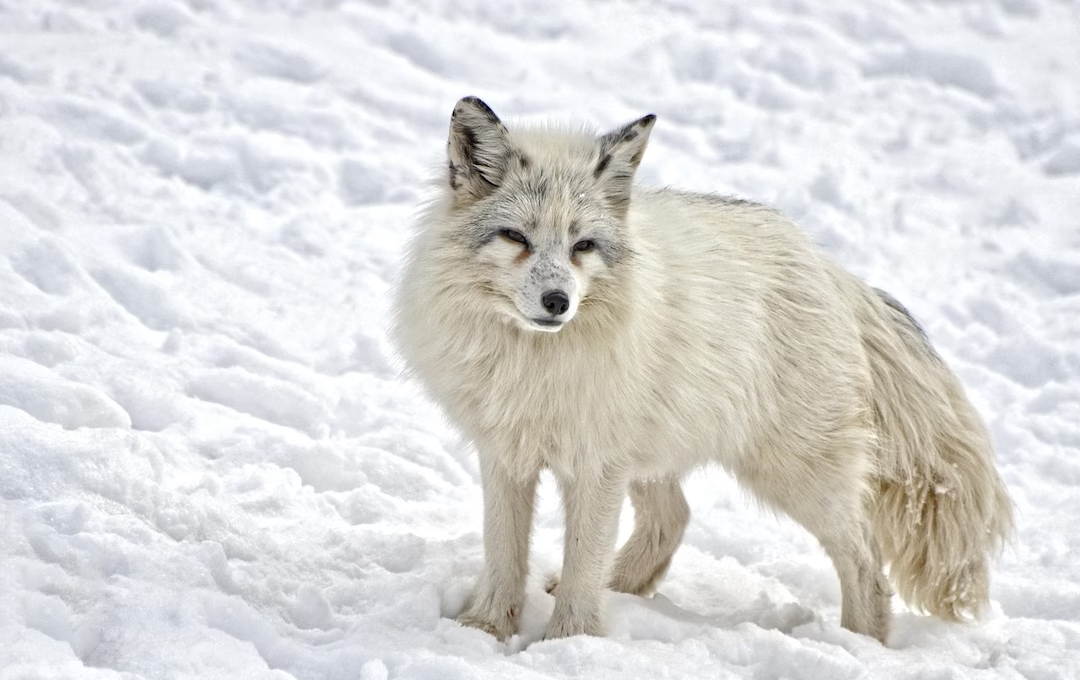Arctic foxes are experts at blending into their environment. Their fur changes from white in the winter to brown or gray in the summer, making them almost invisible to both predators and prey.
Did you know that an Arctic fox holds the record for the longest distance traveled by a land animal – over 2,700 miles (4,345 km) in just 76 days!
Despite their small size, Arctic foxes are excellent swimmers and can cross rivers or icy waters when necessary.
Built for the Cold
Arctic foxes have fur-covered paws (called mufflers) to keep their feet warm and prevent slipping on ice.
They have the warmest fur of any mammal, so well-insulated that it keeps them warm in temperatures as low as -58°F (-50°C)! To conserve heat, Arctic foxes curl into a tight ball while sleeping, tucking their bushy tail over their face for extra insulation.
Natural Architects
Arctic foxes dig complex dens with multiple entrances and chambers, which they often reuse for generations. Some of these dens are over 300 years old!
Highly Adaptable Diet
Althoug lemmings are their primary food source, Arctic foxes are opportunistic feeders eating birds, fish, eggs and berries. They often follow polar bears to scavenge leftovers from their meals, turning scraps into survival feasts!
In extreme starvation conditions, Arctic foxes have been known to eat seaweed or even chew on their own fur for nutrients.
Super Smellers
They can smell prey under several feet of snow and will use their keen sense of hearing to pinpoint exactly where to dig.

Have fun exploring the habits of Arctic foxes!

Guess the answers to these quiz questions and earn 1 point for each correct one!

Drag each arctic animal to its matching winter coat!

Track down all the Arctic foxes hidden in the snow!

Discover the incredible journey of this little Arctic fox!





